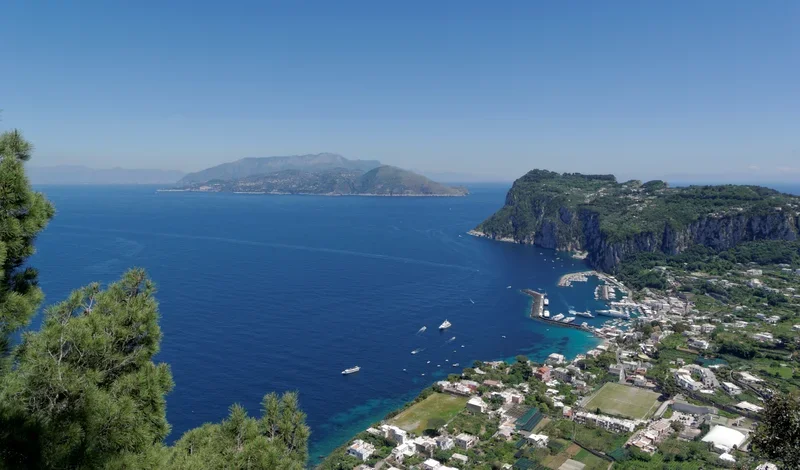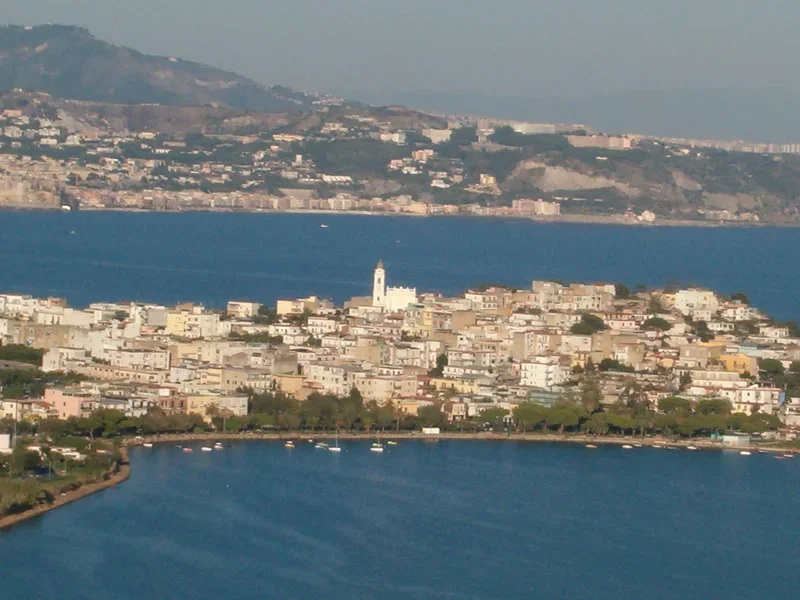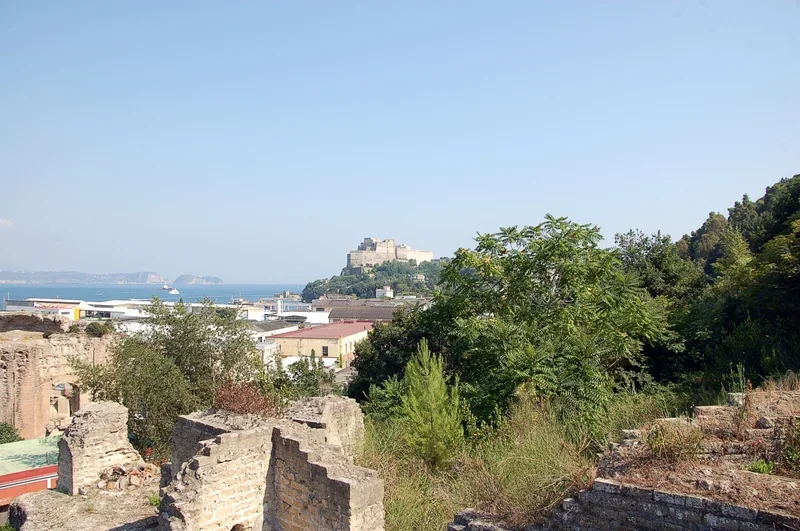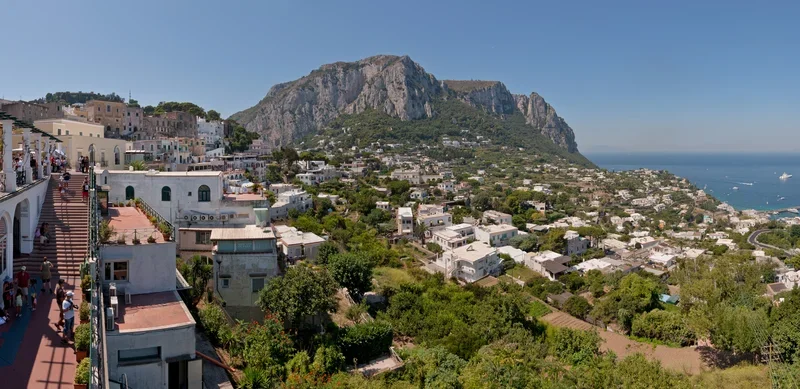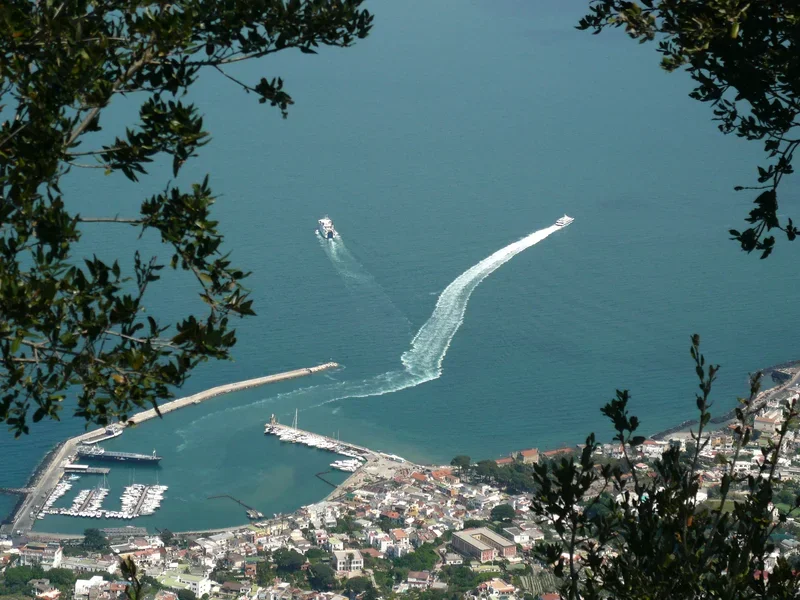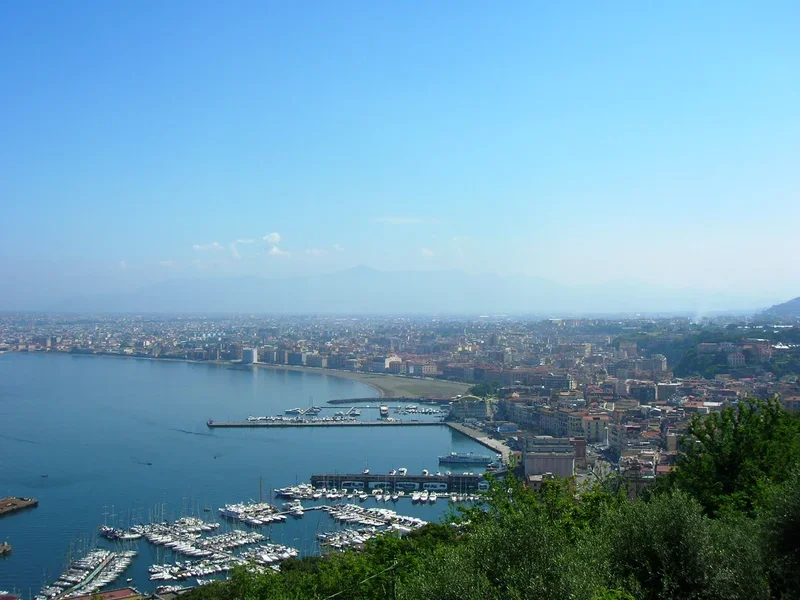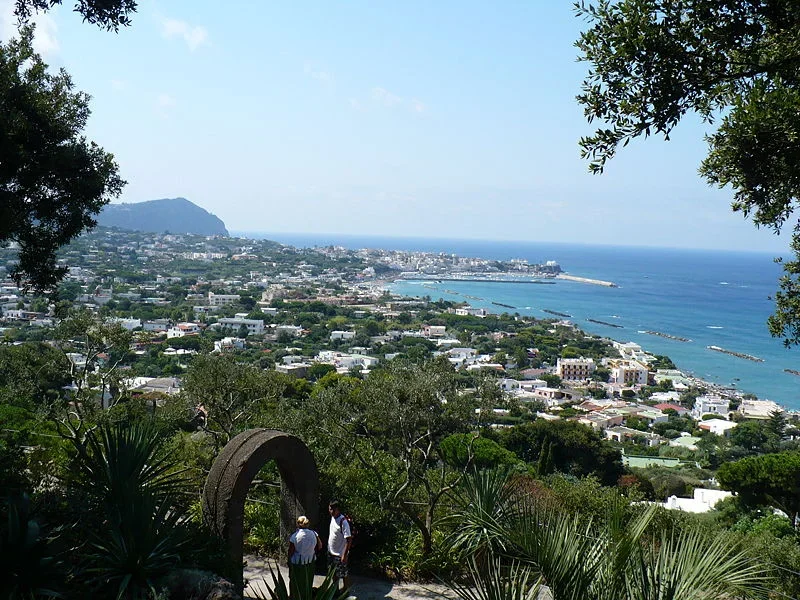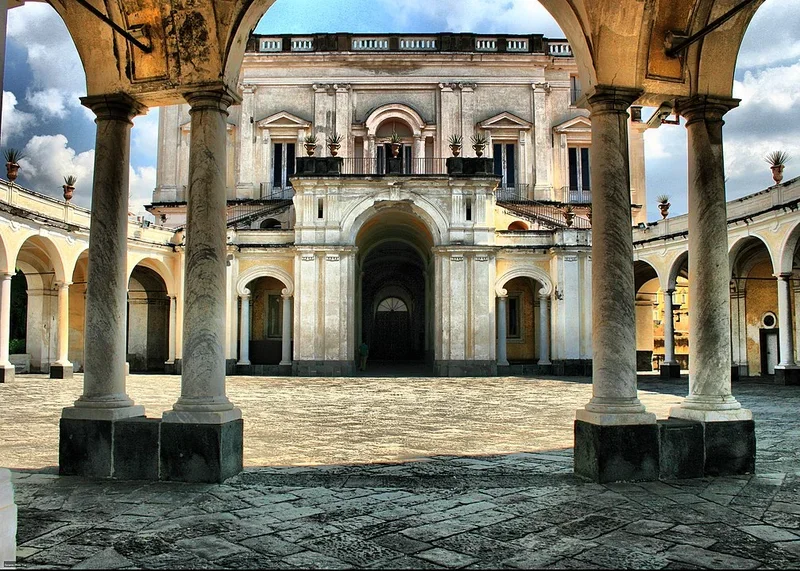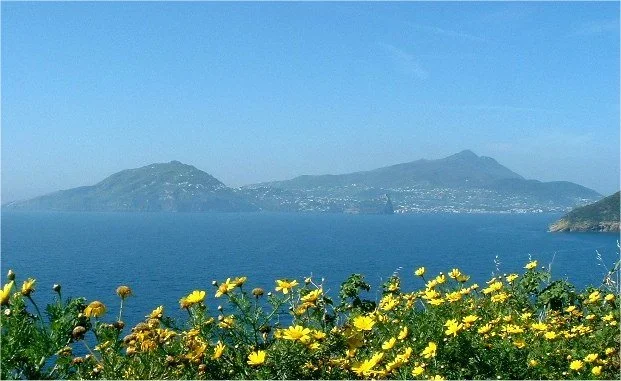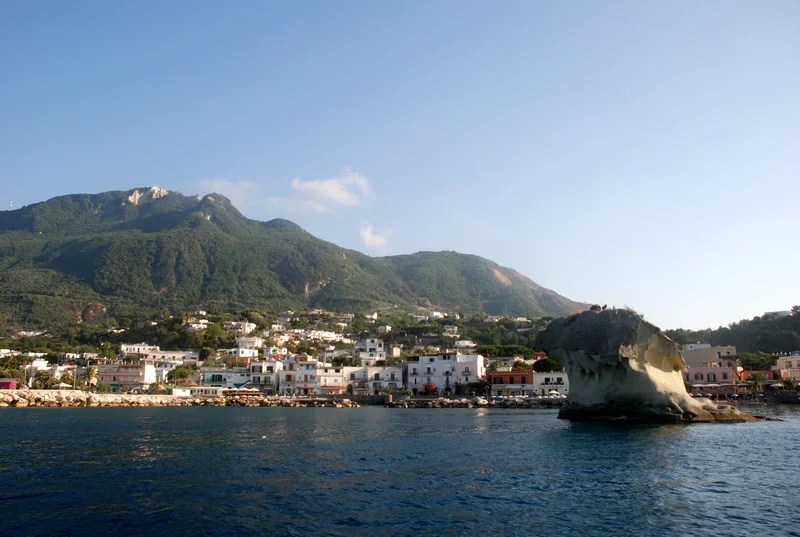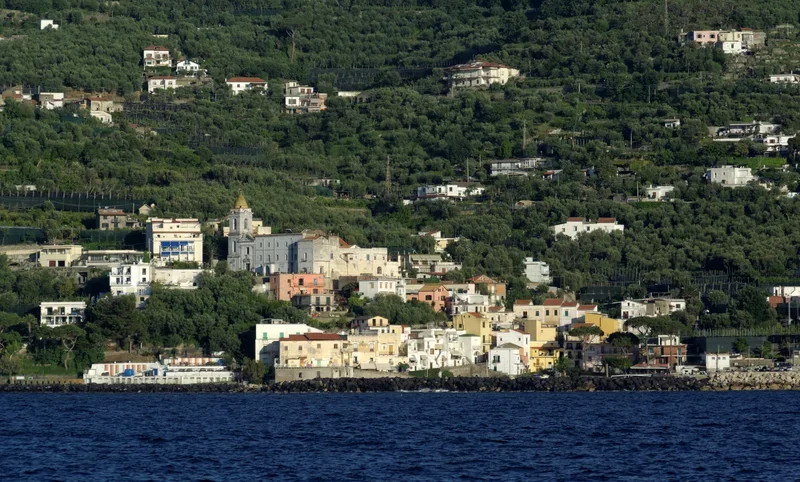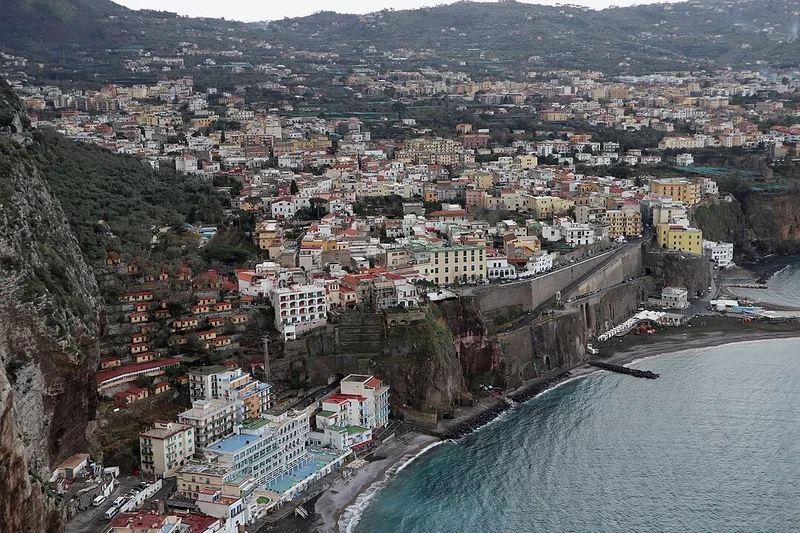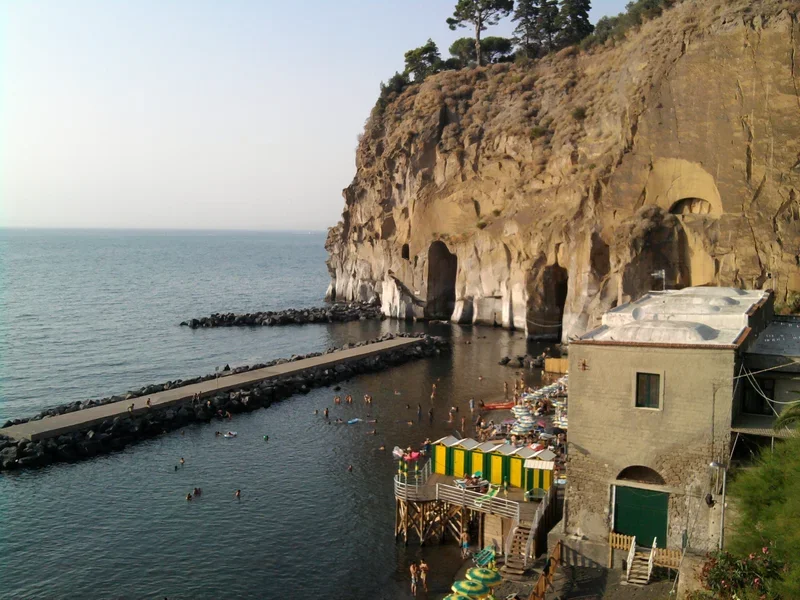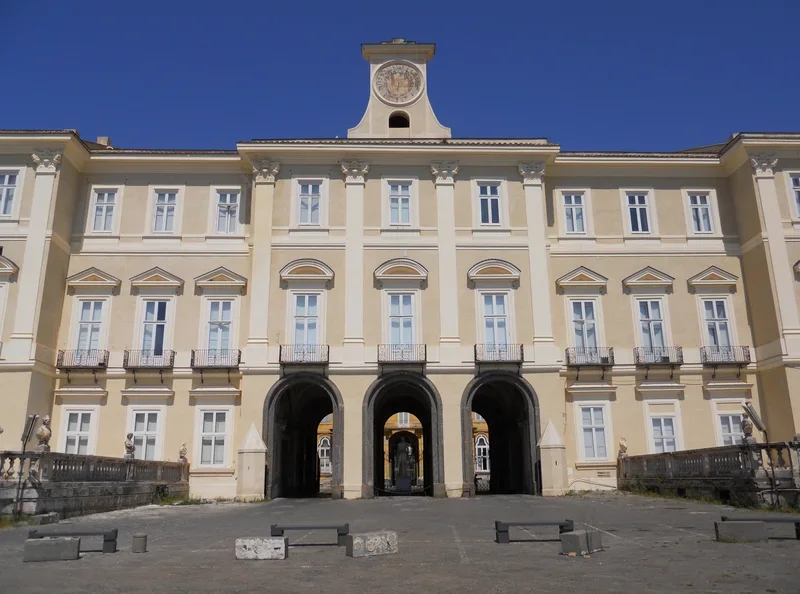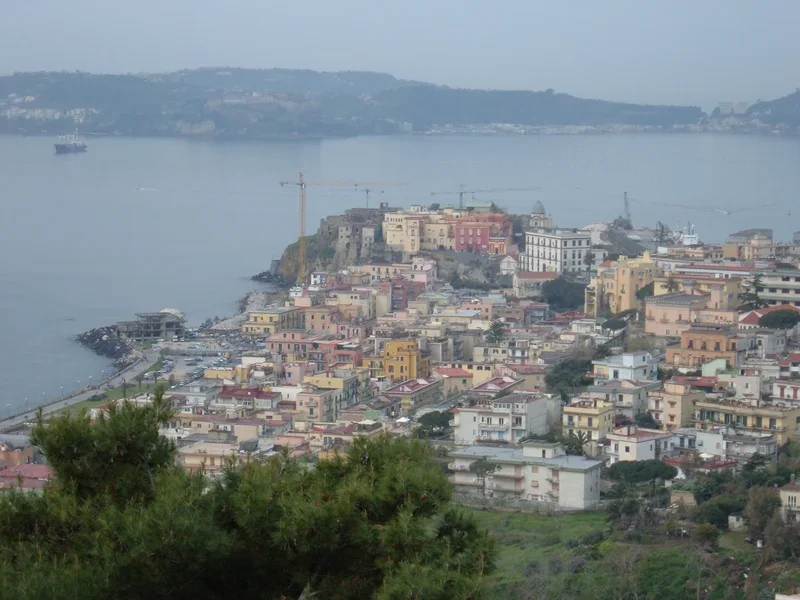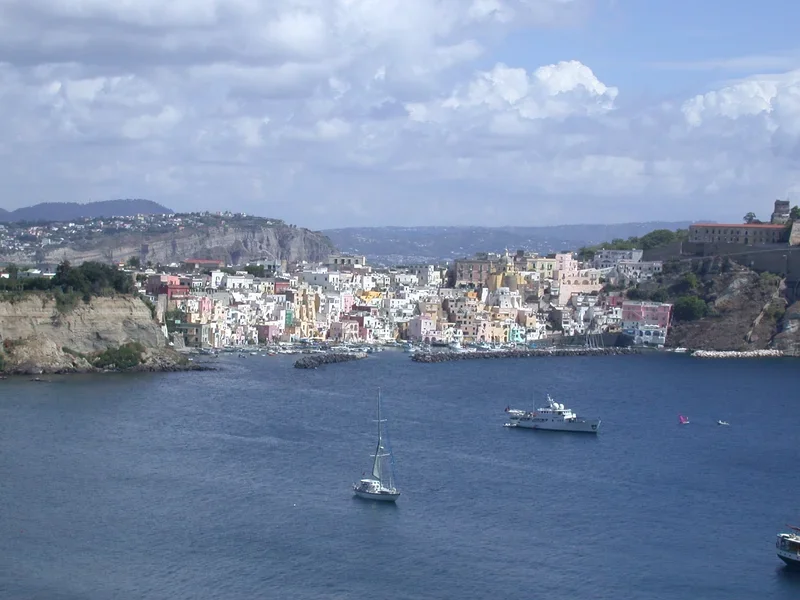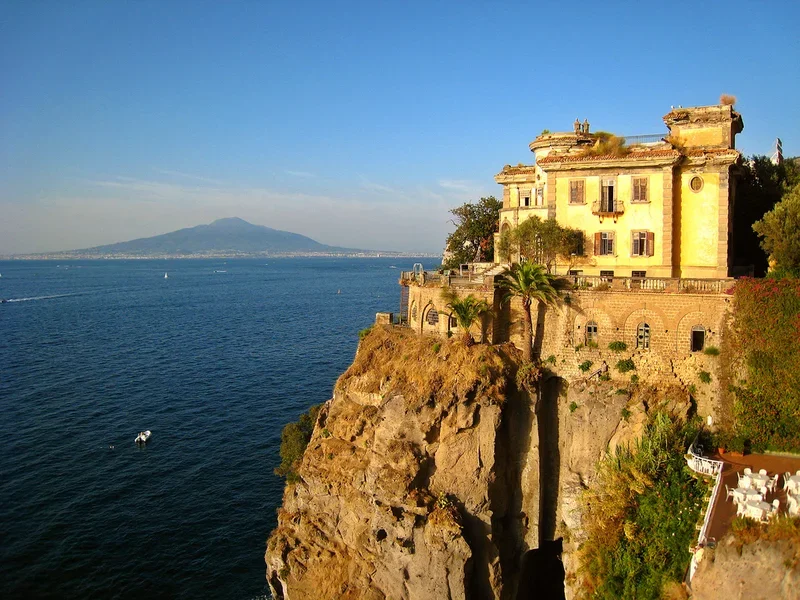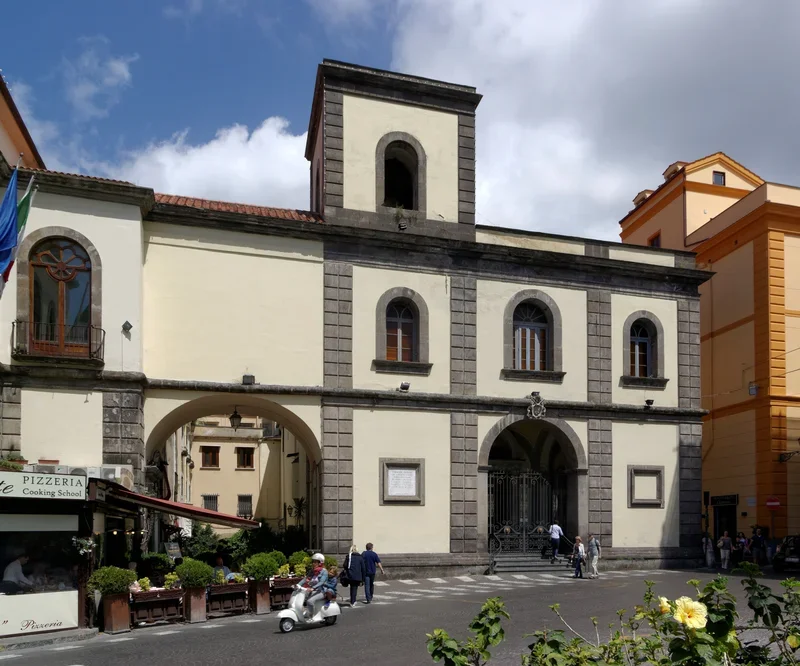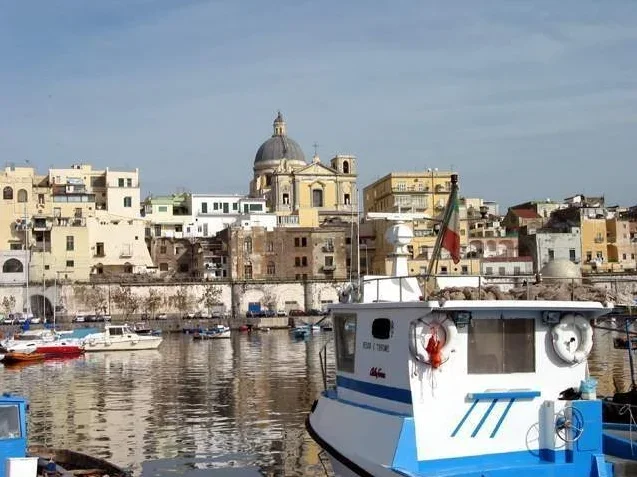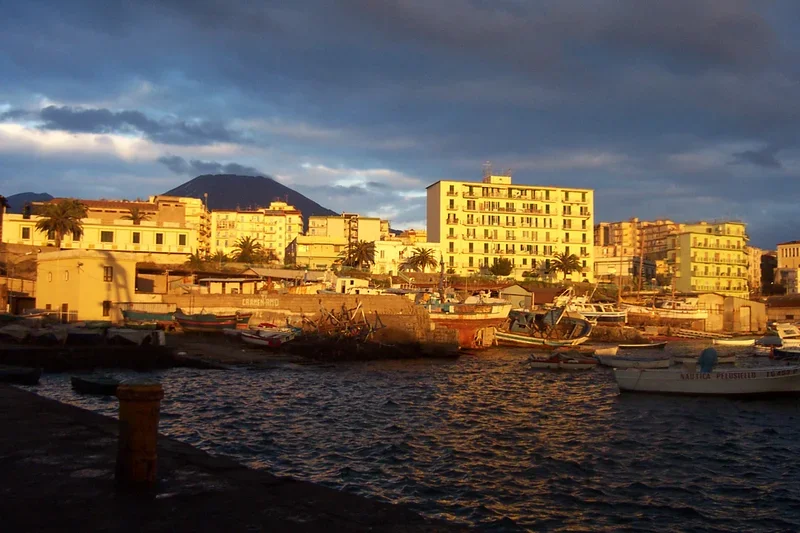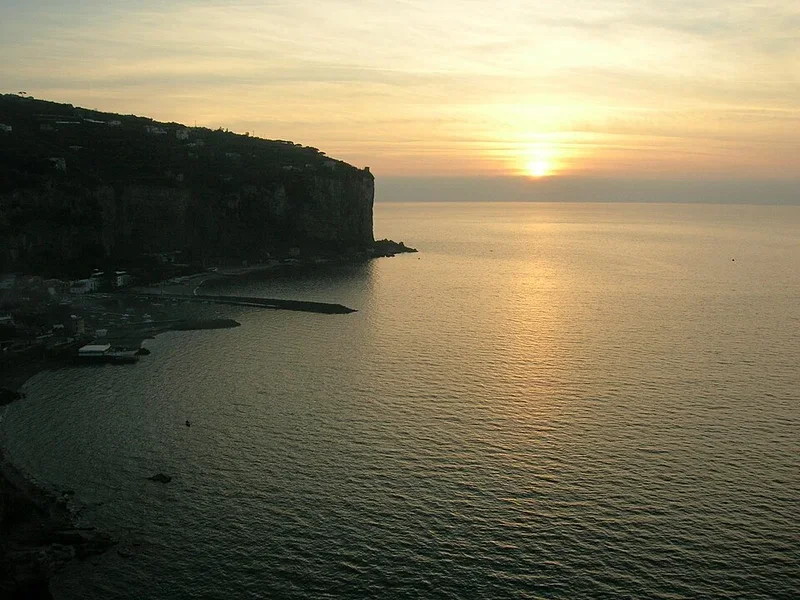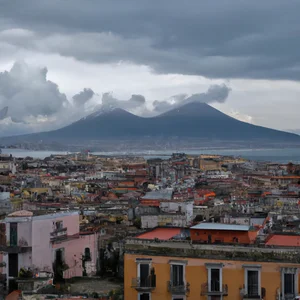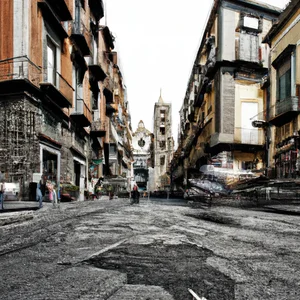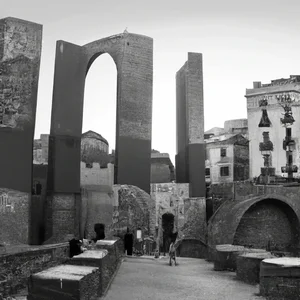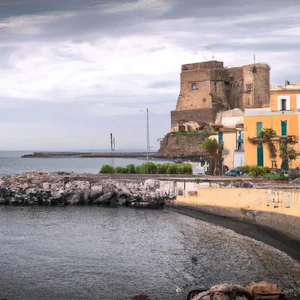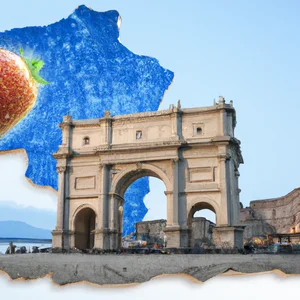Book your experience
Naples weather
Naples, the Neapolitan city located in the heart of the Mediterranean, is one of the most fascinating tourist destinations in Italy. With its thousand-year history, its iconic monuments, and a vibrant culture, Naples attracts visitors from all over the world every season of the year. However, to best plan your trip and fully enjoy the beauty of this city, it is essential to have a good understanding of its climate and the weather conditions you may encounter. This article, divided into ten points, will provide you with all the information necessary to understand the weather in Naples and best organize your visit.
Let’s start with the Mediterranean climate, which is typical of Naples and helps make the city a pleasant place to visit at any time of the year. The Mediterranean climate, characterized by mild winters and warm summers, creates a perfect environment for exploring both the historical wonders and natural beauty of the region.
The average annual temperatures of Naples are another important aspect to consider. With temperatures rarely dropping below freezing in the winter and reaching high peaks in the summer, the city offers weather conditions that can affect the type of activities you can enjoy while visiting.
Summers in Naples are known for being hot and humid. These conditions can make days spent on the beaches of the Gulf of Naples or exploring nearby islands such as Capri and Ischia particularly pleasant. However, it is important to be prepared for intense heat and high humidity during the summer months.
Winters in Naples, on the other hand, are mild and quite humid, making the city an ideal retreat for those wishing to escape the rigors of winter in other parts of Europe. The moderate temperatures allow you to enjoy the city’s attractions without the discomfort of the intense cold.
Annual rainfall, prevailing winds and the best time to visit Naples are other key points covered in the article. Knowing the distribution of rainfall and the direction of the winds can help you better plan outdoor activities and excursions.
The weather also affects cultural events and outdoor activities in Naples. This article will guide you through the best seasons to participate in festivals, concerts and other cultural events that make Naples a lively and dynamic city.
Finally, there will be practical advice on how to dress and prepare to best face the climate of Naples in every season, thus guaranteeing a comfortable and unforgettable travel experience.
With this information, you will be ready to discover Naples in all its beauty, enjoying the best possible weather conditions for each of your adventures in the city.
Mediterranean Climate
The Mediterranean climate of Naples is one of the aspects that make this city so fascinating and welcoming to tourists from all over the world. Located in the south of Italy, Naples enjoys a climate characterized by mild winters and hot summers, with a distribution of rainfall that tends to be concentrated in the colder months.
Characteristics of the Mediterranean Climate
The Mediterranean climate is known for its moderate temperatures throughout the year, with a clear distinction between the seasons. Summers are generally hot and dry, while winters are mild and wetter. These climatic conditions are ideal for those who love spending time outdoors, whether exploring the historic streets of Naples or relaxing on the nearby beaches.
Impact of the Mediterranean Sea
The Mediterranean Sea plays a crucial role in determining the climate of Naples. The relatively warm sea waters help moderate temperatures, making winters milder and summers less scorching than in many other inland regions. This mitigating effect is particularly evident in the coastal areas of the city, where temperatures tend to be more stable.
Flora and Fauna
The Mediterranean climate favors a rich biodiversity both in terms of flora and fauna. In Naples, it is common to see citrus, olive and fig trees, which thrive in the hot, dry climate of summers. Furthermore, city parks and green areas are often populated by a variety of animal species, which find ideal conditions for living in this climate.
Advantages for Tourism
The Mediterranean climate of Naples represents a great advantage for tourism. The favorable climatic conditions allow you to visit the city at almost any time of the year. The abundance of sunny days and the scarcity of rainfall during the summer season make Naples an ideal destination for those who want to enjoy the sun, the sea and the historical beauties without having to worry too much about the weather.
In conclusion, the Mediterranean climate of Naples not only positively influences the quality of life of its inhabitants, but also contributes to creating a welcoming and pleasant environment for visitors. Whether you are a history buff, a nature lover or simply looking for a relaxing holiday, Naples offers ideal climatic conditions to satisfy every type of need.
Average Annual Temperatures
Naples, located in the heart of the Mediterranean, enjoys a particularly mild and pleasant climate for most of the year. The average annual temperatures reflect this characteristic, making the city an ideal destination for visitors in any season.
Spring
Spring in Naples is characterized by temperatures ranging from 12°C to 20°C. In the months of March, April and May, the climate is cool and pleasant, with days that become progressively longer and sunnier. This period is particularly appreciated for the flowering of gardens and parks, making outdoor walks very pleasant.
Summer
During the summer months, i.e. June, July and August, average temperatures fluctuate between 25°C and 30°C, but can easily exceed 35°C on the hottest days. Evenings are generally mild, making it possible to enjoy the many outdoor activities and evening events without suffering too much from the heat. Although the humidity may increase, the sea breeze helps make the climate more bearable.
Autumn
Autumn in Naples, from September to November, is characterized by temperatures that vary between 15°C and 25°C. This period sees a gradual decrease in summer heat, with days that are still sunny but less sultry. The mild temperatures and the lower tourist influx make this period ideal for visiting the city and its attractions.
Winter
Winters in Naples, in the months of December, January and February, are mild compared to other European cities. Average winter temperatures are between 8°C and 15°C. Although the days can be rainy, snowfall is extremely rare. Cold temperatures are almost non-existent, making Naples an attractive destination even during the coldest months.
In summary, the average annual temperatures in Naples show wide seasonal variability but remain generally mild and pleasant. This makes the city a welcoming place for tourists at any time of the year, offering an ideal climate for exploring its historical, cultural and natural beauties.
Hot and Humid Summers
Naples is known for its hot and humid summers, a climatic aspect that significantly influences daily life and tourist activities in the city. Summer temperatures can easily exceed 30°C (86°F), with peaks sometimes reaching 35-37°C (95-99°F). This heat is often accompanied by a high level of humidity, which can make the air particularly muggy and oppressive.
Impacts on the tourist experience
High temperatures and humidity can affect tourists' experience in various ways. On the one hand, the intense heat can make visits to the numerous historical and cultural sites of Naples more tiring, such as the National Archaeological Museum, the Castel dell'Ovo and the Castel Nuovo. On the other hand, this type of climate is perfect for enjoying the splendid beaches of the Neapolitan coast and boat excursions to nearby islands, such as Capri, Ischia and Procida.
Advice for dealing with the heat
To best face the hot and humid summers of Naples, it is advisable to follow some precautions:
- Hydration: Drinking lots of water to stay hydrated is essential. Avoid alcoholic or sugary drinks which can accentuate dehydration.
- Light clothing: Wear light, breathable clothing, preferably in natural fabrics such as cotton or linen.
- Sun protection: Use sunscreen with a high protection factor, wear wide-brimmed hats and sunglasses to protect yourself from UV rays.
- Activities during cooler hours: Plan sightseeing visits in the morning or evening hours, when temperatures are milder.
Effects on physical well-being
High humidity can increase the perception of heat, causing a feeling of discomfort and fatigue. This can be especially problematic for older people, children and those with pre-existing medical conditions. Therefore, it is important to take frequent breaks in the shade or in air-conditioned places such as museums and restaurants.
Advantages of Neapolitan summers
Despite the heat and humidity, summers in Naples also offer numerous benefits. The long sunny days are ideal for exploring the city and its surroundings, and the lively nightlife offers plenty of opportunities for fun after dark. Furthermore, summer is the perfect time to participate in cultural events and festivals that enliven the city, making your stay in Naples an unforgettable experience.
Mild winters
Naples is famous for its Mediterranean climate, which is characterized by mild and relatively rainy winters. This type of climate makes the city an ideal destination even during the winter months, when many other European destinations suffer from intense cold and snow.
Winter Temperatures
Winter temperatures in Naples are generally very pleasant. The average daytime temperature during the winter months is around 12-15°C, while night temperatures rarely drop below 5-8°C. These values make Naples an excellent choice for those who want to escape the harsh winter of northern Europe.
Climatic Conditions
During the winter, days in Naples can be quite variable. The rains are more frequent than in summer, but rarely last for whole days. In fact, it is common to have sunny days even in the middle of winter, which allows visitors to enjoy the beauty of the city even during this season.
Advantages of Visiting Naples in Winter
One of the main advantages of visiting Naples in winter is the lower tourist influx. The main tourist attractions, such as the National Archaeological Museum, Pompeii and Vesuvius, are less crowded, allowing for a quieter and more pleasant visit. Additionally, accommodation prices tend to be lower than in the summer months, providing an added incentive for travellers.
Winter Activities
Despite the cooler climate, there are many activities you can do in Naples during the winter. Panoramic walks along the Caracciolo seafront or a visit to the Christmas markets are just some of the experiences you can enjoy. Plus, cooler days are perfect for exploring the city's many museums and art galleries.
Advice for Visitors
For those who decide to visit Naples during the winter, it is advisable to bring suitable clothing with you. A light, waterproof coat, layered sweaters and comfortable shoes are ideal for dealing with variable weather conditions. An umbrella can be useful to deal with occasional rain, but it is not strictly necessary as rainfall is not abundant.
Annual Rainfall
The annual rainfall in Naples is quite well distributed throughout the year, with a greater concentration during the autumn and winter months. This is typical of the Mediterranean climate, which characterizes the city. The average annual rainfall is around 1,000 mm, with variations that depend on the specific climatic conditions of each year.
Seasonal Distribution of Precipitation
The rainy season in Naples mainly extends from October to March. Here is an overview of seasonal precipitation:
- Autumn (September - November): Autumn marks the beginning of the rainy season. September can still be relatively dry, but October and November see a significant increase in precipitation. November is often the rainiest month of the year.
- Winter (December - February): Winter continues to be a humid season, with frequent rain. However, winter precipitation is generally less intense than autumn precipitation.
- Spring (March - May): Spring sees a decrease in rainfall, with March still able to be relatively humid, while April and May tend to be drier and with milder temperatures.
- Summer (June - August): Summer is the driest season in Naples. Precipitation is rare and generally occurs in the form of short summer thunderstorms.
Impact of Precipitation on Daily Life
Precipitation in Naples can influence various aspects of daily life and tourist activities:
- Mobility: During days of heavy rain, traffic can be more congested. It is advisable to pay attention to road conditions, especially in the hilly areas of the city.
- Outdoor Activities: Fall and winter rains may limit some outdoor activities. However, the many indoor attractions, such as museums and historic churches, remain accessible.
- Events: Some cultural events and festivals may be affected by weather conditions. It's always a good idea to check the weather before attending outdoor events.
In conclusion, while rainfall in Naples can vary throughout the year, the city still offers many opportunities to explore and enjoy its wonders, both in the sun and on rainy days.
Prevailing Winds
Introduction to the Winds of Naples
Naples, located in the heart of the Mediterranean, is a city that sees a variety of winds influence its climate and weather conditions. Understanding the prevailing winds in the region is essential for anyone wishing to visit Naples, as these can affect both outdoor activities and maritime navigation.
The Main Winds
One of the distinctive characteristics of the Neapolitan climate is the frequent presence of winds that blow from different directions. The main winds that influence Naples are:
1. Scirocco
The Scirocco is a hot, dry wind that blows from the Sahara towards the Mediterranean. When this wind reaches Naples, it brings with it high temperatures and increased humidity, creating sometimes oppressive conditions. The Sirocco can also carry sand and dust from the desert, making the air cloudier.
2. Mistral
The Mistral is a cold, dry wind that blows from the north-west. This wind is especially known for cooling the air during the summer months, lowering temperatures and reducing humidity. The Mistral is often associated with clear skies and stable weather conditions.
3. Libeccio
The Libeccio is a wind that blows from the south-west, bringing with it humid air and mild temperatures. This wind can cause rain and thunderstorms, especially during the autumn and winter months. The Libeccio is less frequent than the Sirocco and the Mistral, but can still have a significant impact on the climate of Naples.
4. Tramontana
The Tramontana is a cold wind that blows from the north. This wind is more common during the winter months and can bring a noticeable drop in temperatures. The Tramontana is often accompanied by clear skies and dry air, creating ideal conditions for visibility and outdoor activities.
Impact of Winds on Daily Life
The prevailing winds in Naples influence not only the climate, but also the daily lives of inhabitants and visitors. For example, hot winds such as the Sirocco may require protective measures against the heat, such as the use of hats and sunscreen. On the other hand, cold winds such as the Tramontana require adequate clothing to protect yourself from the cold.
Advice for Visitors
For visitors, it is important to be aware of the prevailing winds and their characteristics. During Sirocco periods, it is advisable to stay hydrated and limit intense physical activities. On Mistral days, however, it is possible to enjoy cooler temperatures and clear skies, ideal for exploring the city and its outdoor attractions.
In conclusion, the prevailing winds in Naples play a crucial role in shaping the city's climate and weather conditions. Knowing these winds can help visitors prepare adequately and make the most of their experience in the splendid Neapolitan city.
Best Time to Visit Naples
Naples, with its historical and cultural charm, is a fascinating tourist destination throughout the year. However, there are specific periods in which visiting this wonderful city can be particularly pleasant and rewarding.
Spring (March - May)
Spring is often considered the best time to visit Naples. During these months, temperatures are mild, generally ranging between 15°C and 25°C, making outdoor walks extremely pleasant. Additionally, the city and its surroundings bloom with vibrant greenery, making excursions to historic parks and gardens a wonderful experience. Even archaeological sites such as Pompeii and Herculaneum are less crowded than in the summer months, allowing for a more relaxed visit.
Autumn (September - November)
Another excellent time to visit Naples is autumn. Temperatures are similar to spring temperatures, remaining between 18°C and 25°C, and humidity decreases compared to summer. Autumn offers perfect weather for exploring the city and attending cultural events. Furthermore, the grape harvest brings a festive atmosphere to the surrounding countryside, and you can taste local wines and fresh products at the numerous festivals and popular festivals.
Summer (June - August)
If you decide to visit Naples in the summer, it is important to be prepared for high temperatures and humidity. While summer days can exceed 30°C, visiting the city during this period offers the opportunity to enjoy Campania's beautiful coasts and beaches. Summer evenings are enlivened by numerous outdoor events, concerts and festivals, but it is advisable to plan sightseeing visits in the early morning or late afternoon to avoid the intense heat.
Winter (December - February)
Although winter is generally mild, with temperatures rarely dropping below 5°C, it is one of the least crowded times to visit Naples. This can be advantageous for those who want to explore museums, historic churches and other attractions without the crowds. The Christmas holidays bring a magical atmosphere to the city, with Christmas markets and artistic nativity scenes adorning the streets and squares.
In conclusion, the best time to visit Naples depends on personal preferences. Spring and autumn offer ideal weather conditions for exploring the city, while summer is perfect for those who love the sea and outdoor events. Winter, although quieter, offers a unique experience with its Christmas traditions and relaxed atmosphere.
Weather and Outdoor Activities
Naples, with its Mediterranean climate, offers a wide range of outdoor activities that can be enjoyed throughout the year. The combination of mild temperatures and a variety of landscapes makes this city a true paradise for lovers of outdoor activities.
Spring
Spring is one of the best times to explore Naples outdoors. Temperatures are pleasant, oscillating between 15°C and 25°C, with a low probability of precipitation. This is the ideal time to go on excursions on Vesuvius, visit the gardens and parks, such as the Parco Virgiliano and the Real Bosco di Capodimonte, or simply stroll along the Lungomare Caracciolo.
Summer
Summer in Naples can be hot and humid, with temperatures often exceeding 30°C. However, warm summer evenings are perfect for enjoying outdoor events and festivals. The beaches of the Amalfi Coast and nearby islands such as Capri and Ischia are popular destinations for those looking to cool off and relax in the sun. Activities such as sailing, swimming and snorkeling are popular during this period.
Autumn
Autumn is another great time to visit Naples. Temperatures drop, making the weather very comfortable for outdoor activities. This is the perfect time to explore archaeological sites such as Pompei and Herculaneum, take walks in the vineyards and participate in the many local festivals and festivals that celebrate seasonal products.
Winter
Although winter in Naples is mild, with temperatures rarely dropping below 5°C, it is still possible to enjoy many outdoor activities. Sunny days are ideal for visiting local markets, taking scenic walks and exploring the historic areas of the city. Mountain excursions, such as those in the Lattari Mountains, are widely practiced by nature lovers.
In general, Naples offers a wide range of outdoor activities for all tastes and all seasons. Whether it's water sports, mountain hikes, cultural visits or simply enjoying the natural beauty of the region, the favorable climate makes it all possible.
Weather and Cultural Events
Naples is a city rich in culture and traditions, and the weather plays a fundamental role in the organization and participation in cultural events. Thanks to its Mediterranean climate, the city offers a calendar of events practically all year round, but some seasons are particularly full of unmissable events.
Spring
Spring is one of the best seasons to visit Naples in terms of cultural events. The mild temperatures and low rainfall make this period perfect for outdoor festivals and artistic events. The May of Monuments is one of the most anticipated events, with guided tours, shows and exhibitions that celebrate the historical and artistic heritage of the city. Even the Naples Comicon, the international comics and animation festival, usually takes place in April or May, attracting fans from all over the world.
Summer
Despite the hot and humid summers, Naples does not slow down its cultural offering. Events tend to move towards the evening, when temperatures are more bearable. The Naples Theater Festival takes place between June and July and includes theatrical performances, dance and operas in various evocative places in the city. The Lungomare Caracciolo also hosts numerous outdoor events and concerts, making summer evenings particularly vibrant.
Autumn
Autumn is another ideal time to immerse yourself in Neapolitan culture, with still pleasant temperatures and less tourist crowds. The Naples Film Festival, generally held in September, is an unmissable event for cinema lovers. Furthermore, the Musical Autumn, a series of classical and contemporary music concerts, takes place in various theaters and historic churches in the city.
Winter
Naples' mild winters allow you to enjoy cultural events even in the colder months, although less frequently than in other seasons. Christmas in Naples is one of the most heartfelt celebrations, with markets, live nativity scenes and Christmas concerts. New Year in Naples is famous for its spectacular fireworks and concerts in Piazza del Plebiscito, which attract thousands of people.
In conclusion, the weather in Naples favors a rich cultural offer throughout the year. Whether festivals, concerts or theater events, there is always something interesting to do, regardless of the season. However, spring and autumn are probably the best times to fully enjoy what the city has to offer, thanks to the mild temperatures and variety of events available.
Dress and Preparation Tips
When planning a trip to Naples, it is essential to consider the city's Mediterranean climate when deciding what to pack. Below you will find some detailed advice on clothing and preparation for each season, so that you are always ready to make the most of your visit.
Spring (March - May)
Spring in Naples is generally mild and pleasant, with temperatures varying between 12°C and 22°C. It is advisable to dress in layers, as the days can be warm but the evenings tend to be cool. Bring a light jacket or sweater with you, along with comfortable T-shirts and trousers. A folding umbrella or a light raincoat can be useful in case of sudden rain.
Summer (June - August)
Summers in Naples are hot and sometimes humid, with temperatures often above 30°C. Light, breathable clothing is essential. Think about clothes made of cotton, linen and other materials that promote breathability. Don't forget a hat to protect you from the sun, sunglasses and high protection sun cream. A portable fan can also be a great idea to deal with the scorching heat.
Autumn (September - November)
Autumn is a variable season, with temperatures that can fluctuate between 15°C and 25°C. Once again, layered clothing is recommended. Bring a waterproof jacket or trench coat, as autumn rains can be frequent. Comfortable and water-resistant shoes are ideal for exploring the city without worries.
Winter (December - February)
Winters in Naples are mild compared to the rest of Italy, with temperatures rarely dropping below 5°C. However, evenings can be cold, so it is advisable to have a warm coat, scarf, gloves and a hat. A warm sweater and sturdy trousers will keep you warm during the coldest days. Even in winter, an umbrella can be useful to deal with any rain.
General Advice
Regardless of the season, it's always a good idea to bring comfortable shoes. Naples is a city best explored on foot, and many of its attractions are found in areas with cobblestone paving or narrow streets. A small backpack or shoulder bag can be useful for carrying essential items such as water, snacks and a city map.
Finally, don't forget to check the weather before your departure to make any adjustments to the clothing and accessories you plan to bring with you. Have a good trip and enjoy Naples in every season!

